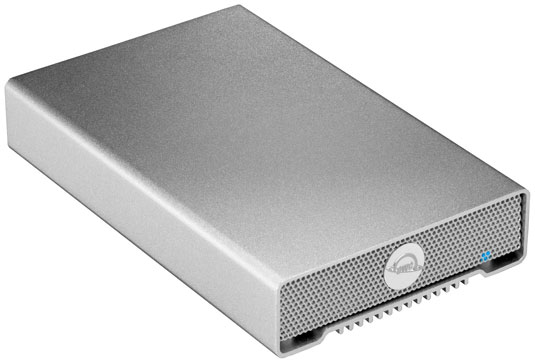Hosted by site sponsor WebMate.
Retina MacBook Q&A
Update Published December 2, 2021
All Mac Q&As >> Retina Display MacBook Q&A (Home)
To be notified of new Q&As, sign up for EveryMac.com's bimonthly email list.
What custom processor options were available for the Retina Display MacBook models? Can the processor be upgraded?
The stock "Early 2015" Retina MacBook models -- the MacBook "Core M" 1.1 12-Inch and "Core M" 1.2 12-Inch -- both originally could be upgraded with a 1.3 GHz Core M (M-5Y71) processor at the time of purchase.
The stock "Early 2016" MacBook models -- the MacBook "Core m3" 1.1 12-Inch and "Core m5" 1.2 12-Inch -- each could be upgraded to a 1.3 GHz Core m7 (M7-6Y75) for an additional US$250 or US$150, respectively, at the time of purchase.
Finally, the stock "Mid-2017" Retina MacBook models -- the MacBook "Core m3" 1.2 12" and "Core i5" 1.3 12" -- each could be upgraded to a 1.4 GHz Core i7 (I7-7Y75) for an extra US$250 or US$150, respectively.
Like all other Intel-powered Apple notebooks, the processor in the Retina MacBook models cannot be upgraded after initial purchase. For those not familiar with Mac history, the vintage PowerBook G3 series was the last Apple notebook line to have upgradable processors.
What type of RAM do the Retina Display MacBook models use? Can it be upgraded?
The "Early 2015" Retina MacBook models all have 8 GB of 1600 MHz LPDDR3 SDRAM whereas the "Early 2016" and "Mid-2017" Retina MacBook models all have 8 GB of faster 1866 MHz LPDDR3 SDRAM.
The final "Mid-2017" line could be upgraded to 16 GB at the time of purchase for an extra US$200. Earlier models could not be upgraded at all.
Regardless of generation, the RAM is soldered onboard and cannot be upgraded after the initial system purchase.
What type of internal storage do the Retina Display MacBook models use? Is it possible to upgrade it?
All Retina MacBook models shipped with 256 GB or 512 GB onboard PCIe-based SSDs. It is soldered onboard and cannot be upgraded at the time of purchase or afterwards.
However, the "Early 2015" models use PCIe 2.0-based storage and the "Early 2016" and "Mid-2017" models use faster PCIe 3.0-based storage. Although both are PCIe 3.0-based, the storage in the "Mid-2017" models is "up to 50% faster" than the storage in its predecessors.
How do you connect external storage to the Retina Display MacBook? What options are available? Is it possible? Are adapters required?
It is possible to connect external storage to the Retina Display MacBook. However, because the Retina Display MacBook only has a single USB-C port, it originally was necessary to use an adapter to connect an external hard drive or SSD that had a then "traditional" USB 2.0 or USB 3.0 port.
The simplest option to connect an external USB 2.0 or USB 3.0 speed storage drive with a USB-A connector to the Retina Display MacBook is to use an Apple USB-C to USB adapter (MJ1M2AM/A), but using this adapter means that the notebook cannot charge the battery while the external hard drive is connected.
Consequently, the more expensive Apple USB-C Digital AV Multiport Adapter (MJ1K2AM/A) and Apple USB-C VGA Multiport Adapter (MJ1L2AM/A) are more versatile options as they can connect to power, an external USB device, and an external display at the same time.

Photo Credit: Other World Computing (Mercury Elite Pro mini)
If you would prefer to just purchase a convenient external hard drive with a USB-C connector that can be used directly with the Retina MacBook without the need for an adapter, which definitely is the best solution these days, a good option is the inexpensive OWC Mercury Elite Pro mini from site sponsor OWC.
With the OWC Mercury Elite Pro mini, it even is possible to install your own 2.5" SATA drive or upgrade it later with a higher capacity option:
OWC sells a handful of other USB-C equipped external hard drives and SSDs, too.
Permalink | Report an Error/Typo | Sign Up for Site Update Notices
<< Retina Display MacBook Q&A (Main) | All Mac Q&As
Established in 1996, EveryMac.com has been created by experts with decades of experience with Apple hardware. EveryMac.com includes, and always has included, original research incorporating detailed, hands-on inspection of packaging, computers, and devices as well as extensive real-world use. All information is provided in good faith, but no website or person is perfect. Accordingly, EveryMac.com is provided "as is" without warranty of any kind whatsoever. EveryMac.com, and the authors thereof, shall not be held responsible or liable, under any circumstances, for any damages resulting from the use or inability to use the information within. For complete disclaimer and copyright information please read and understand the Terms of Use and the Privacy Policy before using EveryMac.com. Copying, scraping, or use of any content without expressed permission is not allowed, although links to any page are welcomed and appreciated.
